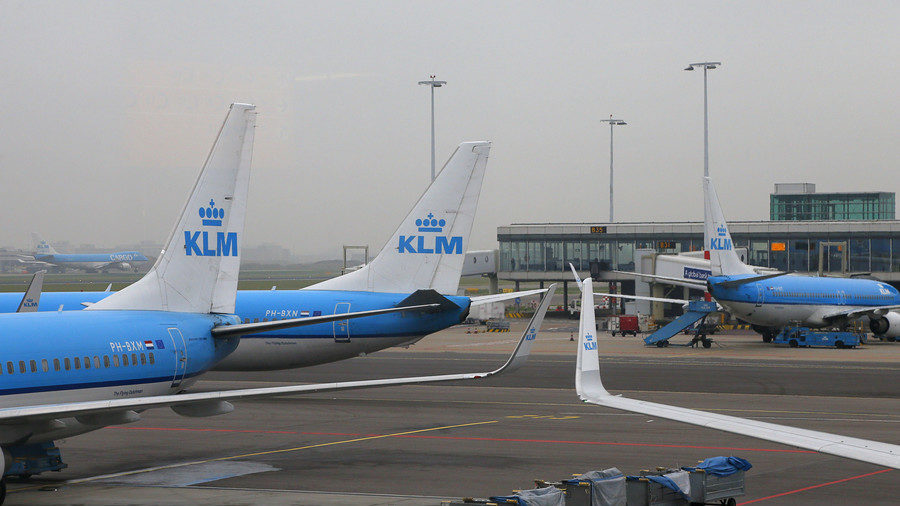
In dramatic footage posted online, a bolt of lightning is shown hitting the nose of the daily flight from Amsterdam's Schiphol Airport to the Peruvian capital of Lima. Amazingly, the Boeing 777-300ER continued unperturbed, landing at Lima airport on schedule 12 hours and 40 minutes later. RT.com has contacted KLM for comment.
Lightning strikes most commonly hit a plane's extremity, such as a wing tip or the nose. As long as there are no gaps in the shell of the plane, the current will travel through the aluminum surface of the aeroplane until it escapes through the tail. However, pilots sometimes complain of electrical issues and interference with instruments following a lightning strike, according to Scientific American.
New airliners such as Dreamliners and Boeing Airbus 350s are made from a carbon composite covered with a thin layer of copper that protects the cabin from electric currents. Fuel tanks are also protected from lightning, with metal covering fuel caps, vents and access doors made to withstand temperatures up to 27,000 degrees Celsius.



Reader Comments
How do they achieve this? This is well beyond capabilities of any known material. I suppose they have a very loose definition of "withstanding" temperatures.